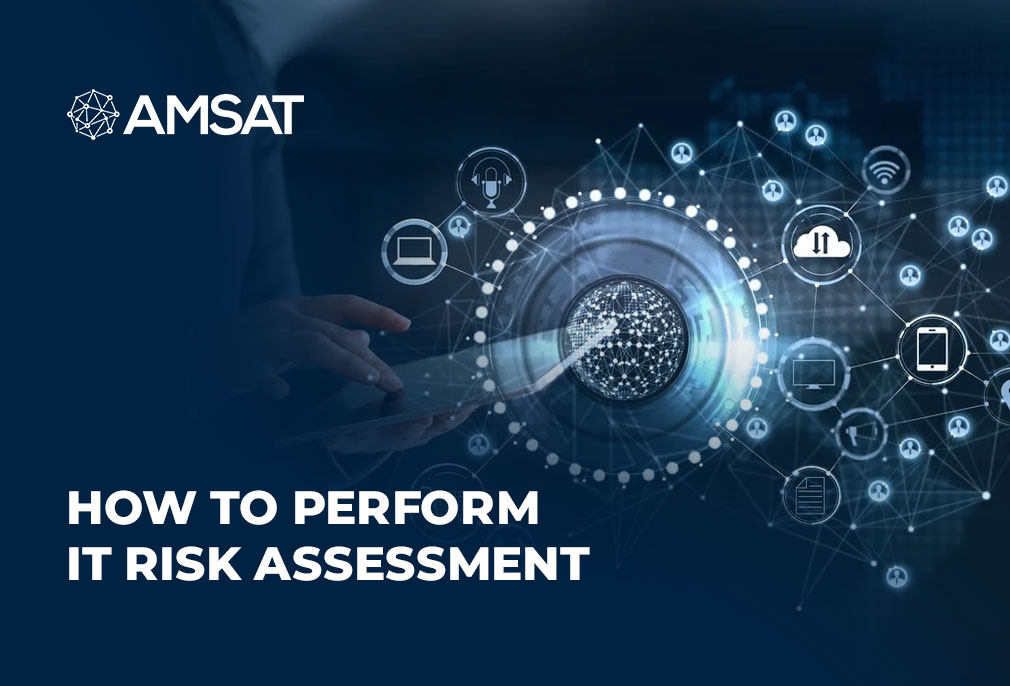Latest Blogs

By AMSAT Feb 11,2022
How to Perform IT Risk Assessment
How to Perform IT Risk Assessment
Understanding, monitoring, controlling, and minimizing risk to your organization’s essential assets is at the heart of cybersecurity. If you work in security, you tend to, by default, engage yourself in the risk management business. No wonder you take every trick in the book to ensure your organization is highly protected against all manner of cyber-attacks, including the service of some well-known external threat protection detection service providers.
What is a security risk assessment?
The process of identifying and analyzing risks for assets that could be harmed by cyberattacks is known as cybersecurity risk assessment. Essentially, you examine both internal and external threats, evaluate their potential effect on data accessibility, privacy, and integrity, and estimate the costs of a cybersecurity event. Using this information, you can tailor your cybersecurity and data protection rules to your organization’s actual risk tolerance.
To begin assessing IT security risks, you must first answer three key questions:
- What are your company’s important information technology assets, or the data whose loss or exposure would have a significant impact on your business?
- What are the key business processes that utilize or require this information?
- What threats could jeopardize those business functions’ capacity to function?
You can start building strategies once you know what you need to safeguard. However, before you spend any amount of your budget or an hour of your time putting in place a risk-reduction solution, be sure you know which risk you’re dealing with, how significant it is, and whether you’re handling it in the best possible manner.
Significance of regular IT security assessments
Conducting a thorough IT security assessment on a regular basis helps organizations develop a solid foundation for ensuring business success.
- It enables them to do things like:
- Identify and fix IT security flaws
- Prevent data breaches
- Select appropriate protocols and policies to limit risks
- Protect the asset with the highest value and risk as a top priority.
- Evaluate possible security partners
- Establish, manage, and confirm regulatory compliance
- Accurately estimate future demands
- Eliminate unneeded or outmoded control measures
What is cyber risk?
A cyber risk, according to the Institute of Risk Management, is “any risk of financial loss, interruption, or damage to an organization’s reputation as a result of some sort of breakdown of its information technology systems.” “The possibility for an unanticipated, negative business result involving the failure or misuse of IT,” according to Gartner.
The following are some examples of cyber risk:
- Information that is sensitive or controlled is stolen.
- Data loss as a result of hardware failure
- Viruses and malware
- Credentials in jeopardy
- Failure of the company’s website
- Natural calamities that may cause server damage
When assessing cyber threats, it’s critical to consider the specific financial harm that they could cause, such as legal bills, operational disruption, and associated profit loss, and lost revenue due to customer cynicism.
IT risk assessment elements and formula
The four key components. There are four main components to an IT risk assessment. We’ll go into how to evaluate each one later, but first, here’s a quick rundown:
Threat — This constitutes any event that could inflict damage on a company’s people or assets—such as natural calamities, website failures, and corporate spying.
Vulnerability — This is any potential weak point that allows danger to cause harm. Antivirus software that is obsolete, for example, is a weakness that can allow a malware assault to succeed. Having a server room in the basement is a vulnerability that increases the risks of equipment being damaged and downtime being caused by a tornado or flood. Discontented personnel and aged hardware are two further examples of vulnerability.
Impact — The complete damage an organization would suffer if a vulnerability was exploited by a threat is referred to as the impact. A successful ransomware assault, for instance, could result not only in missed output and data recovery costs, but also in the revealing of customer data or trade secrets, which could result in lost business, legal bills, and compliance penalties.
Likelihood — This is the likelihood of a threat occurring. It is usually a range rather than a specific number.
TAGS
- Cyber Crime
- Security Updates
Recent Blogs
Ready to Get Started?
Our specialists are ready to tailor our security service solutions to fit the needs of your organization.









